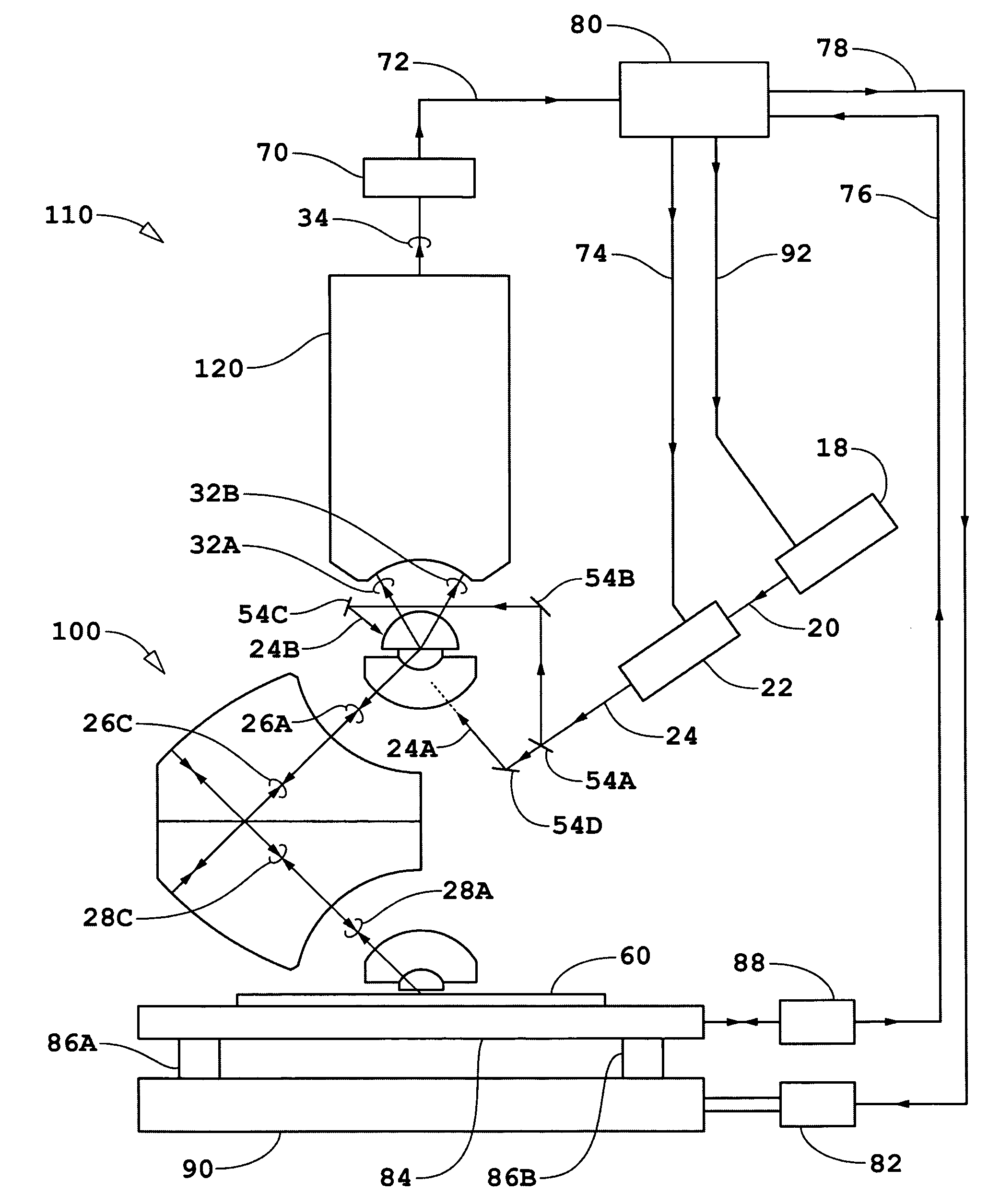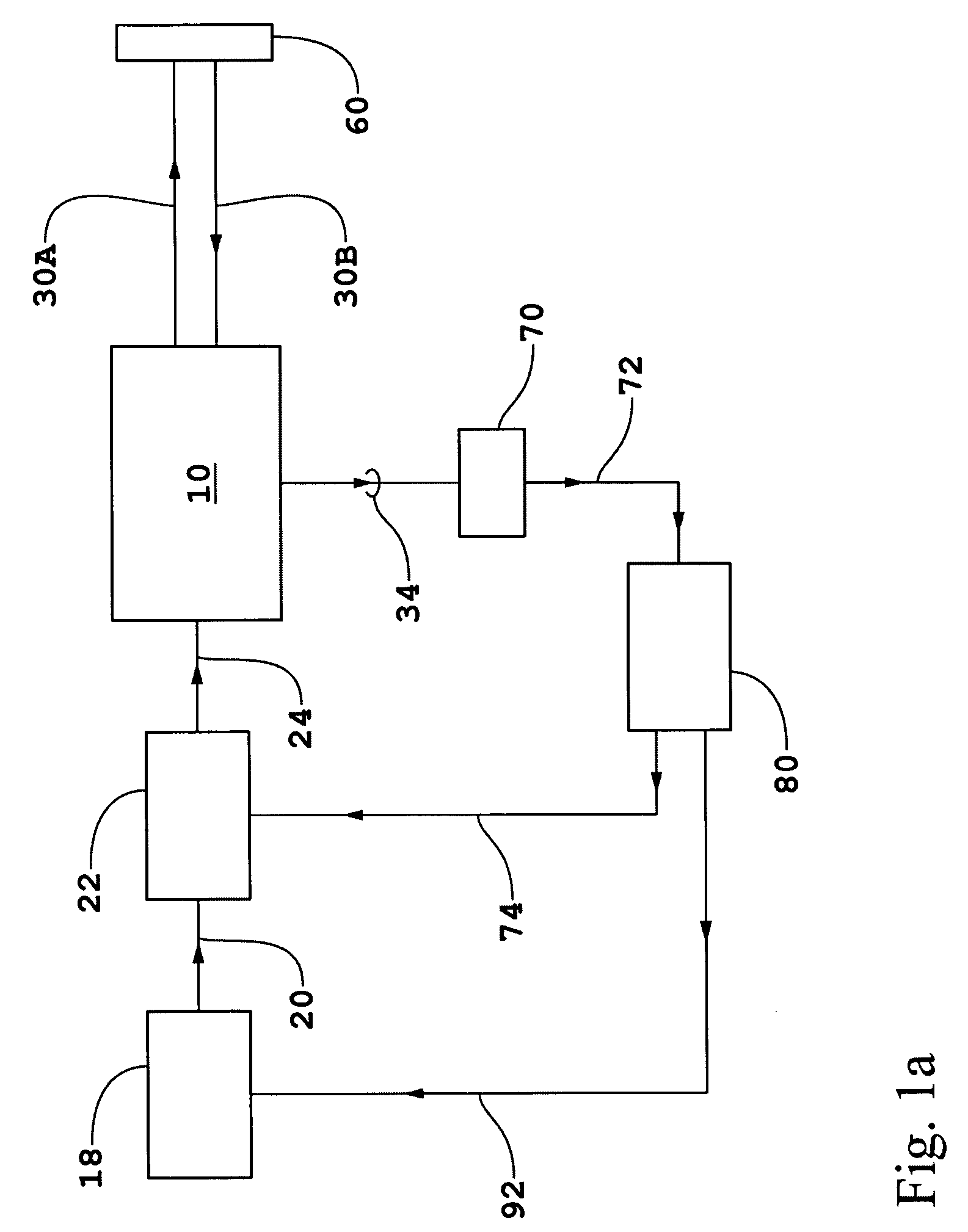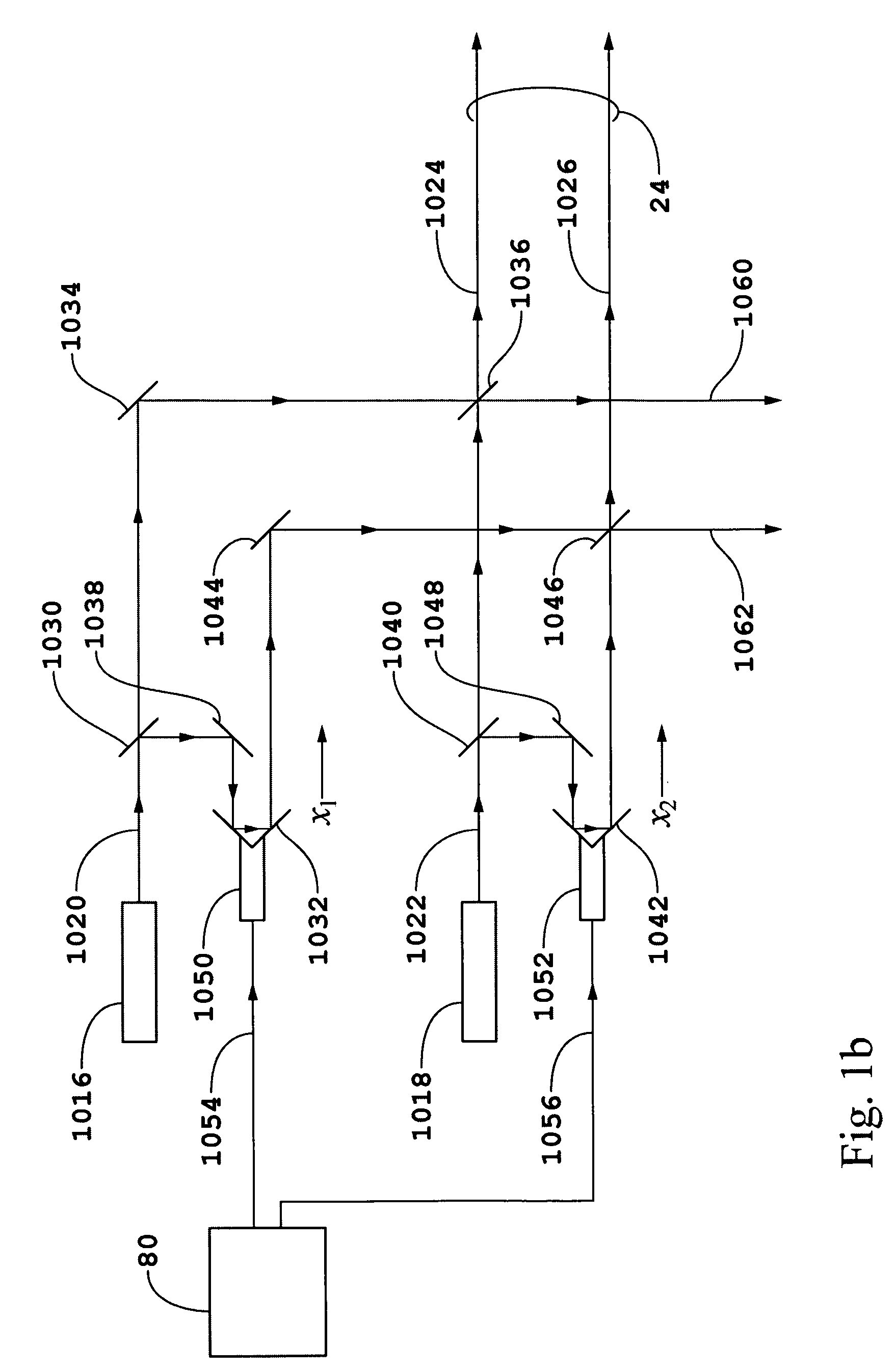Apparatus and methods for overlay, alignment mark, and critical dimension metrologies based on optical interferometry
a technology of optical interferometry and overlay, applied in the field of multi-layer structure manufacturing, can solve the problems of difficult reduction of tis, inaccurate reflection of circuit features of traditional bib targets, accuracy problems, etc., and achieve the effect of reducing vibration sensitivity and high throughpu
- Summary
- Abstract
- Description
- Claims
- Application Information
AI Technical Summary
Benefits of technology
Problems solved by technology
Method used
Image
Examples
first embodiment
[0246]Two different modes are described for the acquisition of the electrical interference signals 72 of the The first mode to be described is a step and stare mode wherein substrate 60 is stepped between fixed locations corresponding to locations where image information is desired. The second mode is a scanning mode. In the step and stare mode for generating a one-dimensional, a two-dimensional or a three-dimensional profile of substrate 60, substrate 60 mounted in wafer chuck 84 is translated by stage 90 (see FIG. 1c). The position of stage 90 is controlled by transducer 82 according to servo control signal 78 from electronic processor and controller 80. The horizontal position of stage 90 is measured by metrology system 88 and position information acquired by metrology system 88 is transmitted to electronic processor and controller 80 to generate an error signal for use in the position control of stage 90. Metrology system 88 may comprise for example linear displacement and angu...
third embodiment
[0278]An advantage of the third embodiment is that information can be obtained about the measurement object using one or more of the two complimentary oblique measurement beams and non-oblique measurement with a single interferometric metrology system without rotation of either the measurement object or the interferometric metrology system and without changes in the relative location of the single interferometric metrology system with respect to the measurement object in the z direction to make for example overlay metrology measurements. In particular, information about two different surfaces of a measurement object can be obtained simultaneously.
[0279]In the third embodiment of the present invention, the information obtained about the location of feature on a measurement object in a plane parallel to the surface of the measurement object is obtained operating in a scanning mode as with each of various embodiments of the present invention. The statistical and systematic errors in th...
PUM
| Property | Measurement | Unit |
|---|---|---|
| angle of incidence | aaaaa | aaaaa |
| size | aaaaa | aaaaa |
| size | aaaaa | aaaaa |
Abstract
Description
Claims
Application Information
 Login to View More
Login to View More - R&D
- Intellectual Property
- Life Sciences
- Materials
- Tech Scout
- Unparalleled Data Quality
- Higher Quality Content
- 60% Fewer Hallucinations
Browse by: Latest US Patents, China's latest patents, Technical Efficacy Thesaurus, Application Domain, Technology Topic, Popular Technical Reports.
© 2025 PatSnap. All rights reserved.Legal|Privacy policy|Modern Slavery Act Transparency Statement|Sitemap|About US| Contact US: help@patsnap.com



